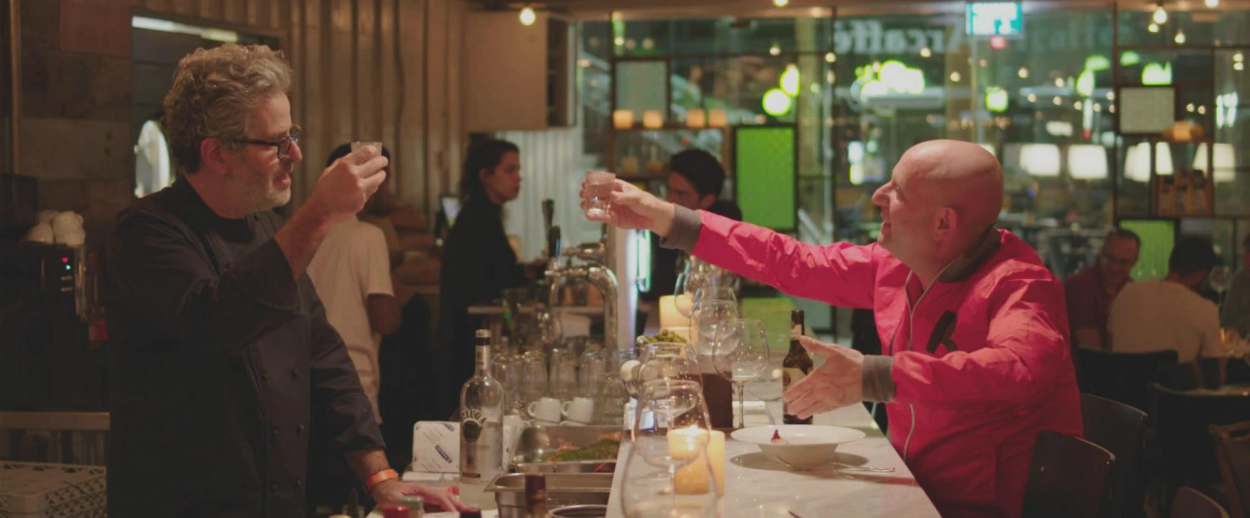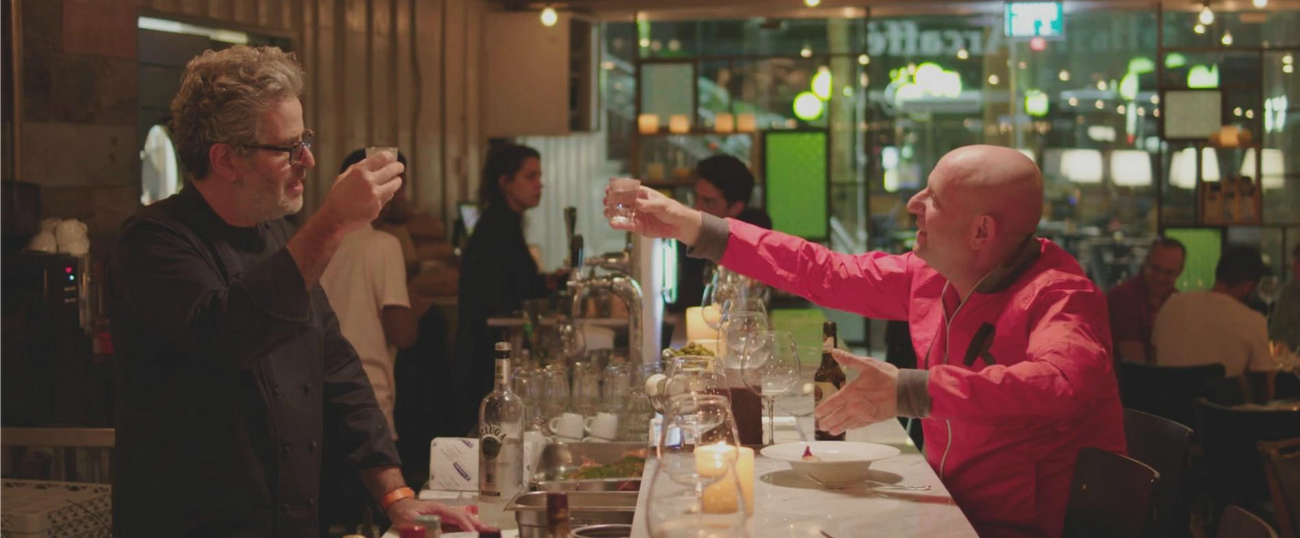Searching for ‘Real’ Israeli Food
A new documentary series searches through Israel’s history and restaurant scene for an authentic Israeli cuisine




Israelis eat 35,000 tons of hummus a year. That’s just one of the quick facts presented by a new Israeli documentary series that tries to answer the question: what is Israeli cuisine? The series is called Meorav Israeli, meaning Mixed Israeli, a play on “Meorav Yerushalmi,” the famous Jerusalem mixed grill dish. Over four episodes Israeli comedian Tal Friedman travels across the country and meets various experts in a search for answers. Searching for the real Israeli food he finds clues into the evolving soul of the country, where gefilte fish and falafel both have a place in the past and perhaps the future as well.
“The series was made in honor of Israel’s 70th anniversary,” Ayelet Heller, the director, told Tablet. “The idea was to try and find out what Israeli cuisine is—to see what came from the outside, what we found here, what it once was and what it is today. Israel is still searching for its culinary identity.”
The show starts on a rather depressing note, with the realization that gefilte fish is almost extinct in Israeli cuisine. Israeli society hates gefilte fish—it is widely considered disgusting, even by people who have never tasted it. Of course, the gefilte fish symbolizes something larger: the slow extinction of Eastern European cuisine in Israel in general. It is becoming more and more difficult to find restaurants serving gefilte fish, p’tcha or carrot tzimmes since Ashkenazi food is considered gray and unattractive in modern Israel. Mediterranean cuisine won and took over, which isn’t surprising, since it is the same in the field of music and other cultural realms.
It is not only a matter of climate; while the Ashkenazi represents the diaspora, the Mizrahi represents the place. Nobody makes gefilte fish at the Israeli Master Chef, only chraimeh (North African spicy fish), and Israeli kids aren’t served kasha for lunch at preschool, only couscous.
“The erasing of a tradition is sad,” Heller agrees. “Obviously Middle Eastern food is more suitable to the area than European food but the erasing is very dramatic.” I wonder if gefilte fish could ever make a comeback in Israeli cuisine, and Heller sounds optimistic. “Food isn’t just food. It has lots of different meanings, and this particular thing is influenced by the Ashkenazi-Mizrahi rift, which is very strong today. I believe that when these tensions will diminish, gefilte fish can make a comeback.”
The second episode is dedicated to the chickpea the basic ingredient in both hummus and falafel. Falafel used to be Israel’s national dish: rich in protein, tasty, cheap and very suitable to the Israeli lifestyle. The country’s Ministry of Tourism even printed postcards depicting half a pita with falafel and a little Israeli flag sticking out. But falafel isn’t originally Israeli or even Jewish: It’s an Egyptian dish, where it was made out of fava beans, and there is a Lebanese version too, but Israelis nationalized it. In Israel falafel is identified with Yemenites because they were the first to make and sell it on the streets of Tel Aviv and Jerusalem in the early years. Even though falafel is still big in Israel, for the last 20-30 years hummus surpassed it in popularity. Arguing over which hummus joint is the best in the country and travelling to remote Arab villages to find the holy grail of hummus are two popular local pasttimes. However, the ultimate Israeli food may not be made out of chickpeas at all—maybe it’s the pita, as the third episode tries to establish. Just like the Moroccan spicy fish took over from the gefilte fish, the pita took over from the challah.
In this episode we learn that the modern pita, which is small, round and has a pocket inside, is a development of the Middle Eastern flatbread. The episode also touches on the ongoing trend of the gourmet pita, in which traditional fillings are replaced with more upscale alternatives, like minute steak or shrimp. The last episode discusses the lesser known phenomenon of Israeli wine, which, just like Israeli food, is also trying to find its identity.
During the series, a few different dishes are nominated as the most Israeli dish—there’s the falafel, naturally, and also the all-Israeli combo of schnitzel in a pita with hummus, fries and salad (chicken schnitzel of course).
So, after four episodes, what is Israeli cuisine after all? “It’s a good question and there isn’t one simple answer,” Amos Sion, the chef of Helena Restaurant in Caesarea Harbor, told us. “The state of Israel exists 70 years, which is too short a period of time to develop a real culinary history and culture. Nowadays Israeli cuisine can be defined by its ingredients—lots of fish, chicken, olive oil, hot pepper and fruit and not so much butter, cream or red meat. If 20 years ago Israeli chefs tried to bring cuisines from other countries to Israel, nowadays there is a wave of pride in our own cuisine and trying to define it. We are in the middle of a process and it will be easier to answer what Israeli cuisine is in 50 years from now.”
Dana Kessler has written for Maariv, Haaretz, Yediot Aharonot, and other Israeli publications. She is based in Tel Aviv.